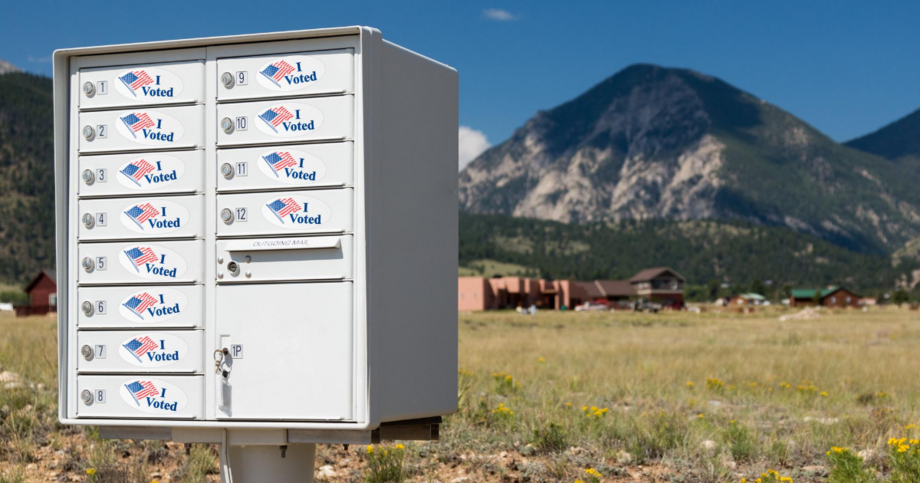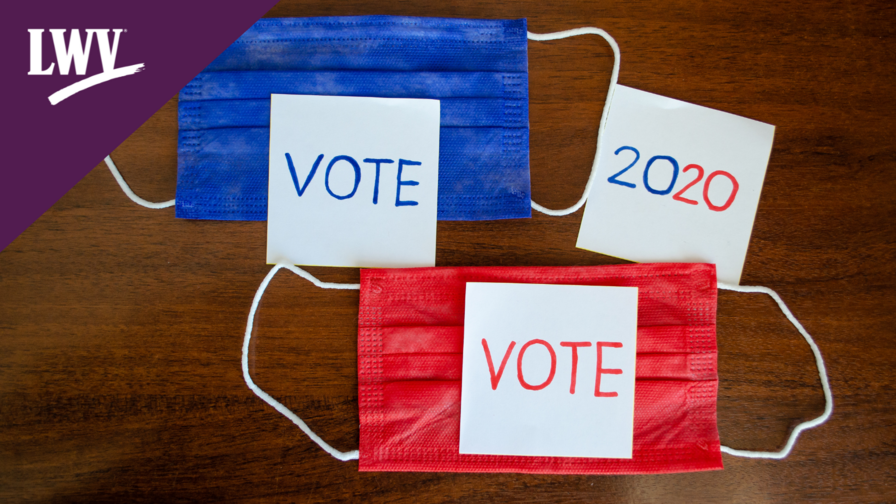What COVID-19 Taught Us About Making Voting Accessible
Two years ago, the World Health Organization (WHO) declared COVID-19 a global pandemic. From that moment on, the world changed. We changed.
Many of us had to abruptly cut ourselves off from the things that had given us joy and meaning, throughout our lives: family gatherings, celebrating birthdays or special holidays, summertime picnics or trips to the park, first dates in coffee shops, weddings in person, evenings with close friends. Others of us had to completely revise how we lived and engage in the activities that we had taken for granted every day and were suddenly inaccessible — haircuts, eating out, trips to a gym or Y, or a walk around the neighborhood, stopping to chat along the way, breaktime conversations with colleagues, schooling for our children, and more.
But we are resilient. We did everything we could to make sure that the things that mattered remained a part of our lives. We planned virtual movie and game nights with friends, held video weddings and baby showers, ordered restaurant meals to go, and even learned to cut our own hair. And when it came to taking part in our democracy during a presidential election, we were particularly determined.
Mail-in and early voting options were expanded so people could cast their ballots in less crowded environments. Virtual voter tools like VOTE411 helped millions of Americans stay up to date from the safety of their homes. In the end, despite the global pandemic, voter turnout in the 2020 election was the highest of the 21st century.
What does that tell us? It tells us that not only were these measures successful counters to pandemic restrictions, but they made voting accessible to more people than in the years before. We must learn from this experience as we move forward in building a stronger democracy where every person can have access to the vote. We cannot afford to go back, and we must fight to move forward.
Why We Support Early and Mail-In Voting
There are many benefits to early and mail-in voting beyond the safety they provided during the pandemic. Both practices make voting more accessible to:
-
People who work during traditional voting hours: Since Election Day has yet to be named a federal holiday, voters must often take time off work to vote. This isn't possible for many Americans and puts lower-income people at a disadvantage in our democracy. Mail-in and early voting options allow these voters to cast their ballots without risking workplace penalties and/or lost income.
-
People with disabilities: For many voters, the process of getting to the polls, waiting in long lines, and facing other physical barriers (a lack of ramps or elevators, inadequate signage) makes it too difficult to take part in elections. Whether one is dealing with a compromised immune system, limited mobility, or agoraphobia, crowded polling places can be not only difficult but dangerous to navigate. Early voting allows people to access polling locations with less stress and fewer crowd-related risks. Voting by mail allows those with disabilities to take part in elections without risking their health.
-
People with far-away polling locations: Not all polling places are easily accessible. For people who live miles away from their designated location, finding the time and resources to travel to and from the polls (in addition to time spent waiting in line) simply isn't possible. Studies show that increased distance from the polls decreases the number of people voting, particularly in “high-minority” areas.
-
People who hate lines: This one probably applies to most of us — no one wants, or should have, to wait for hours to cast their vote. Early and mail-in voting create more opportunities to vote, thus reducing major crushes at the ballot box on Election Day. It's common sense! Furthermore, lines are shown to be shorter in relatively white, affluent neighborhoods, putting low-income and Black and brown Americans at a distinct disadvantage. Minimizing the time waiting in lines creates a more equitable voting process.

Post-COVID-19 Anti-Voter Measures
Despite all these benefits, many states and localities are cutting back the reforms they made in the early days of the pandemic. In 2021, 19 states passed at least 34 laws making it harder to vote by limiting mail-in and early voting, among other measures.
Why would we do this when we saw that pro-voter measures not only helped us vote during a pandemic but increased the vote beyond anything we've seen this century? Why, in a nation that believes in every person's right to life, liberty, and the pursuit of happiness, would we prevent certain people from participating in our democracy?
These questions are particularly powerful as we enter the 2022 primaries, when the direction of our government will be shaped by the people elected to stand for us. Our government will not speak for the people unless all the people have a say.
We Must Learn From COVID-19
COVID-19 brought pain, loss, and loneliness, but in the case of our democracy, it also brought important lessons. We saw firsthand how we could make our democracy available to more voters, honoring the voices of low-income, BIPOC, disabled, and other Americans. We must build on this knowledge and not waste it or use it to restrict the voter further.
We have had to give up so much. Let's ensure the vote is not yet another loss.
LWV continues to support pro-voter reforms like expanded early and mail-in voting opportunities. We hope you'll join us in our advocacy.
The Latest from the League
In November, millions of Americans spent hours waiting in long lines in order to exercise their right to vote. One solution? Implement better early voting laws. Leagues in Florida and New York are showing us how it's done.
Voters can trust in the safety and security of the mail-in voting process, regardless of recent politicized claims to the contrary. Here are five reasons why.
The 2020 election saw the greatest participation in our nation’s history. Throughout election season, the League worked tirelessly to ensure voters had the information and the access to make their voices heard.
Sign Up For Email
Keep up with the League. Receive emails to your inbox!
Donate to support our work
to empower voters and defend democracy.






